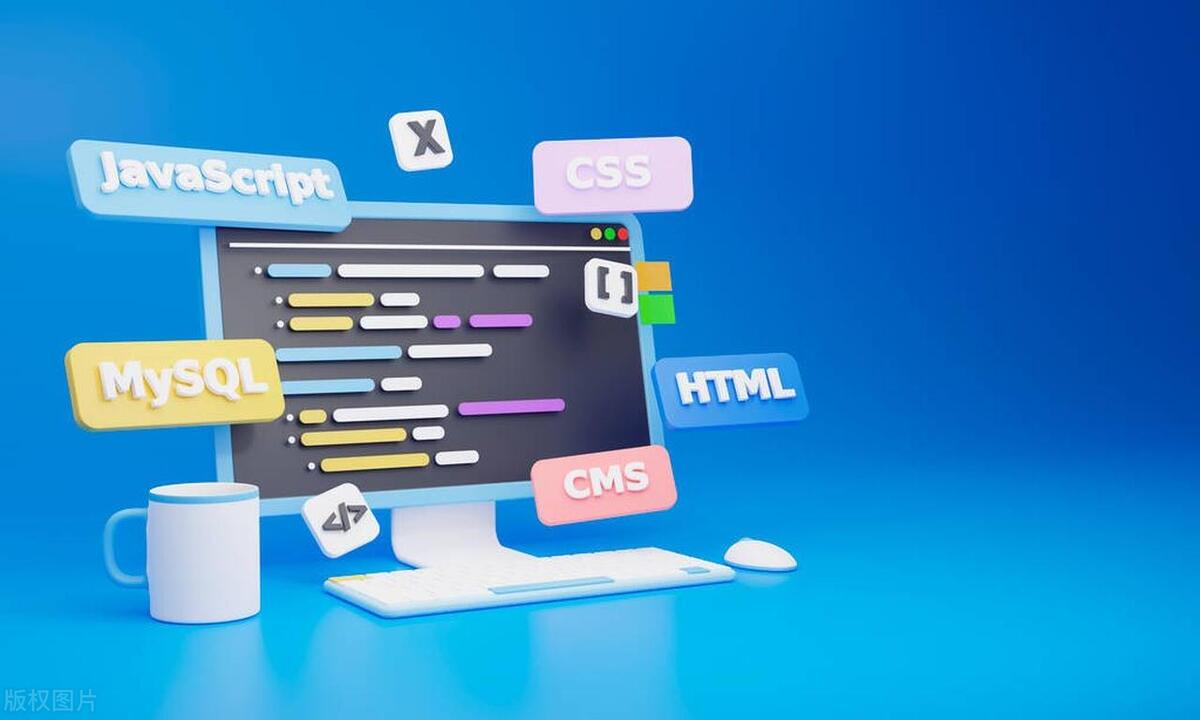In Vue component development, there are three core ways of component communication: Props, Events and Slots. 1. Props is used to pass data to child components, and the type checksum default value setting can be achieved through explicit declarations; 2. Events (such as $emit) enables child components to pass information upwards, which is often used in scenarios such as button clicks or form changes; 3. Slots implements a content distribution mechanism, allowing parent components to insert HTML or components into child components, and supports advanced usage such as named slots and scoped slots.

In Vue component development, communication between components is a core issue that cannot be avoided. The three most common ways are Props, Events and Slots. They are each responsible for different scenarios, and combined use can meet most component interaction needs.

1. Props: Data channel from parent to child
Props is the bridge for passing data between parent and child components. The parent component passes values ??to the child component through the binding attribute, and the child component declares the received field through the props option.

For example, a button component may need to know whether it is currently disabled:
<!-- ParentComponent.vue --> <template> <MyButton :disabled="isSubmitDisabled" /> </template>
The child component needs to explicitly declare this prop:

// MyButton.vue
export default {
props: ['disabled']
}Note: Although you can use
$attrsdirectly without declaration, explicit declaration is clearer and convenient for type checksum default settings.
Suggested practices:
- Use object form to define props, specify type and default value
- Return default values ??using functions for complex structures such as objects or arrays
- Avoid modifying props in child components, and the parent component should be notified of changes with events.
2. Events: Subcomponents pass information upwards
When a child component wants to tell the parent component what happened, it triggers the event with $emit . For example, after clicking the button, triggering a custom event:
// MyButton.vue
methods: {
handleClick() {
this.$emit('click')
}
}The parent component listens for this event and responds:
<template> <MyButton @click="handleSubmit" /> </template>
Vue 3 also supports declaring events in <script setup> using defineEmits .
Some common scenarios include:
- Form input changes (the basics of implementation of v-model)
- Feedback after button click
- Notification of data loading completion
Tips: It is recommended to use kebab-case to naming events, so that short horizontal lines can be written in the template, such as
@item-selected
3. Slots: Content distribution mechanism
Slots solves the problem of "what is rendered" rather than "what is data". It allows the parent component to insert HTML or components into a specific location in the child component.
The basic usage is as follows:
<!-- ParentComponent.vue --> <MyCard> <p>This is the slot content</p> </MyCard>
Use <slot /> to receive in subcomponents:
<!-- MyCard.vue -->
<template>
<div class="card">
<slot></slot>
</div>
</template>Advanced gameplay:
- Named slot:
<template></template> - Scope slot: exposes the data of child components to the parent
- Used in combination with backup content
Special note: If there are multiple slots at the same time, remember to name them clearly to avoid confusion. Some UI libraries provide default slot configuration items for easy customization.
Basically that's it. These three can handle most of the communication problems between components. What is not complicated but easy to ignore is the details, such as when to use events instead of props callbacks, or whether slots really need scope. Choosing on demand is the most important thing to keep logic clear.
The above is the detailed content of Vue Props, Events, and Slots: Component Communication. For more information, please follow other related articles on the PHP Chinese website!

Hot AI Tools

Undress AI Tool
Undress images for free

Undresser.AI Undress
AI-powered app for creating realistic nude photos

AI Clothes Remover
Online AI tool for removing clothes from photos.

Clothoff.io
AI clothes remover

Video Face Swap
Swap faces in any video effortlessly with our completely free AI face swap tool!

Hot Article

Hot Tools

Notepad++7.3.1
Easy-to-use and free code editor

SublimeText3 Chinese version
Chinese version, very easy to use

Zend Studio 13.0.1
Powerful PHP integrated development environment

Dreamweaver CS6
Visual web development tools

SublimeText3 Mac version
God-level code editing software (SublimeText3)

Hot Topics
 What is the role of (formerly PortalVue) in Vue 3 for rendering content outside the current component's DOM hierarchy?
Jun 11, 2025 am 12:09 AM
What is the role of (formerly PortalVue) in Vue 3 for rendering content outside the current component's DOM hierarchy?
Jun 11, 2025 am 12:09 AM
Vue3 is used to render content outside the current component DOM structure. 1. It allows you to move elements such as modal boxes, prompt tools to other locations on the page to solve layout problems, z-index hierarchy and accessibility problems; 2. When using it, you need to wrap the target content and specify the target selector, such as; 3. Vue will physically move the corresponding DOM node to the specified position while maintaining responsiveness and event logic; 4. Common application scenarios include modal boxes, notification messages, tooltips and barrier-free content; 5. When using it, you need to ensure that the target element already exists, and pay attention to the style scope and dynamic logic processing. In short, maintaining the logical relationship of component tree through virtual references provides a concise solution for complex UIs.
 What are some strategies for managing CSS and styling at scale in a large Vue project?
Jun 10, 2025 am 12:10 AM
What are some strategies for managing CSS and styling at scale in a large Vue project?
Jun 10, 2025 am 12:10 AM
TomanageCSSandstylinginlargeVueprojectseffectively,adoptscopedstylesbydefault,establishaglobalCSSarchitecture,useconsistentnamingconventions,selectivelyleverageCSS-in-JSorutilitylibraries,enforceconsistencywithlinters,anddocumentdesigntokens.Beginwit
 How can CSS be used to implement dark mode theming on a website?
Jun 19, 2025 am 12:51 AM
How can CSS be used to implement dark mode theming on a website?
Jun 19, 2025 am 12:51 AM
ToimplementdarkmodeinCSSeffectively,useCSSvariablesforthemecolors,detectsystempreferenceswithprefers-color-scheme,addamanualtogglebutton,andhandleimagesandbackgroundsthoughtfully.1.DefineCSSvariablesforlightanddarkthemestomanagecolorsefficiently.2.Us
 What are some common techniques for vertically centering content using CSS?
Jun 12, 2025 am 10:27 AM
What are some common techniques for vertically centering content using CSS?
Jun 12, 2025 am 10:27 AM
Vertical centering content can be implemented in CSS in a variety of ways, the most direct way is to use Flexbox. 1. Use Flexbox: By setting the container to display:flex and in conjunction with align-items:center, vertical centering of child elements can be easily achieved; 2. Combination of absolute positioning and transform: suitable for absolute positioning elements, by setting top and left to 50% and then using translate (-50%,-50%) to achieve centering; 3. CSSGrid: Through display:grid and place-items:center, horizontal and vertical centering can be achieved at the same time. If only vertical centering is required, use align
 Can you explain the difference between em, rem, px, and viewport units (vh, vw)?
Jun 19, 2025 am 12:51 AM
Can you explain the difference between em, rem, px, and viewport units (vh, vw)?
Jun 19, 2025 am 12:51 AM
The topic differencebetweenem, Rem, PX, andViewportunits (VH, VW) LiesintheirreFerencepoint: PXISFixedandbasedonpixelvalues, emissrelative EtothefontsizeFheelementoritsparent, Remisrelelatotherootfontsize, AndVH/VwarebaseDontheviewporttimensions.1.PXoffersprecis
 How does in Vue 3 help manage asynchronous components and their loading states?
Jun 10, 2025 am 12:07 AM
How does in Vue 3 help manage asynchronous components and their loading states?
Jun 10, 2025 am 12:07 AM
SuspenseinVue3simplifieshandlingasynccomponentsbymanagingloadingstatesandintegratingerrorhandling.1.Itwrapsasynccontentanddisplaysfallbackcontentlikespinnersuntilthecomponentloads.2.YoudefineasynccomponentsusingdefineAsyncComponentandwraptheminaSuspe
 What are slots (default, named, scoped) in Vue, and how do they enable flexible component composition?
Jun 10, 2025 am 12:08 AM
What are slots (default, named, scoped) in Vue, and how do they enable flexible component composition?
Jun 10, 2025 am 12:08 AM
InVue,slotsareessentialforbuildingreusableandflexiblecomponents,andtherearethreemaintypes:default,named,andscoped.Defaultslotsallowaparenttopasscontentintoachildcomponentwithnospecificplacement,idealforsingle-sectioncomponentslikecards.Namedslotsenab
 How does Vue's error handling mechanism (e.g., errorCaptured hook, app.config.errorHandler) work?
Jun 10, 2025 am 12:12 AM
How does Vue's error handling mechanism (e.g., errorCaptured hook, app.config.errorHandler) work?
Jun 10, 2025 am 12:12 AM
Vue provides errorCaptured hooks and global error handlers to deal with application errors. 1. The errorCaptured hook can capture JavaScript errors in the child component tree, including errors in the life cycle hook and rendering function, receive error objects, error components and error location information, and can prevent errors from bubble upward by returning false. 2. Global error handling is configured through app.config.errorHandler, which is used to capture unexpected errors in the entire application, receive error objects, component instances and error type information. It is suitable for rendering functions, life cycle hooks, watcher callbacks and other scenarios, but does not automatically capture errors in event processing or asynchronous operations. 3.






